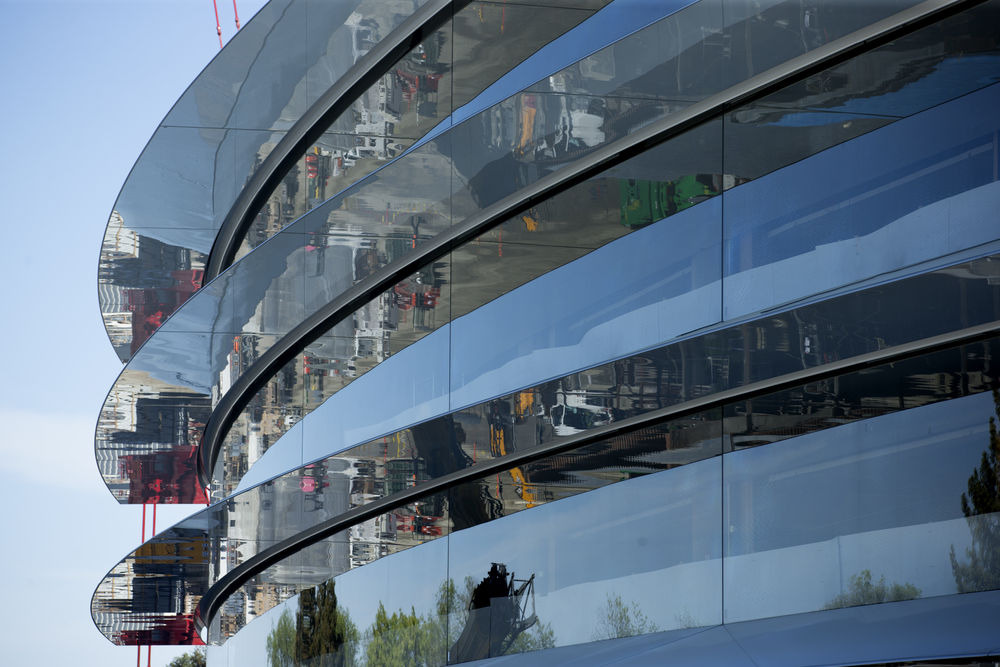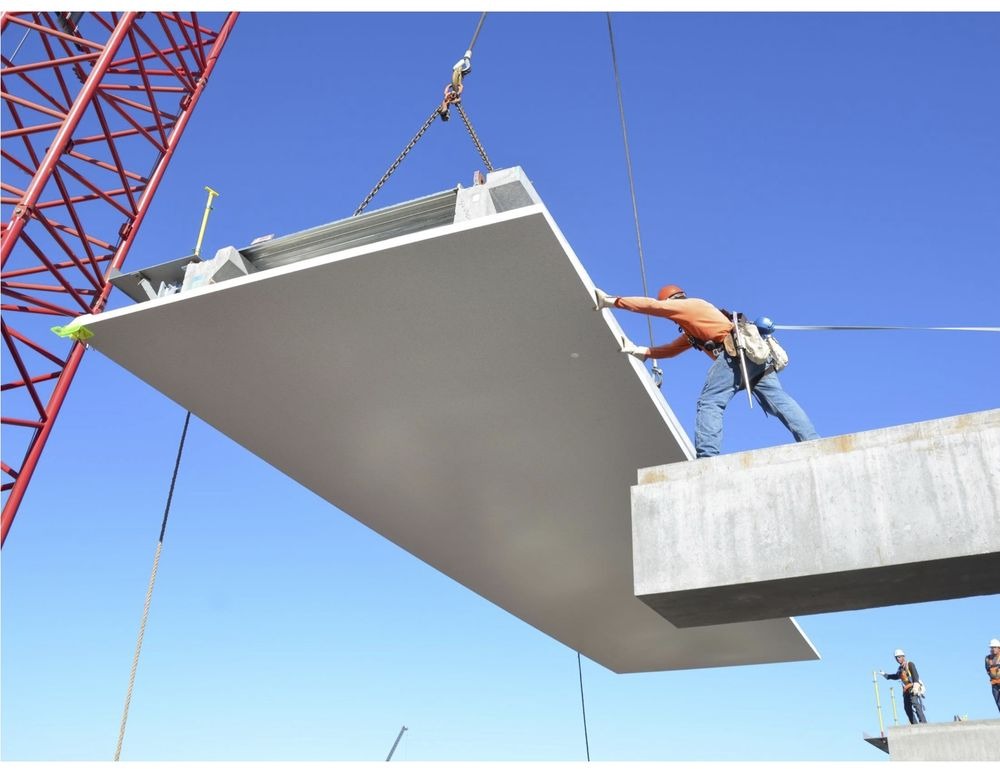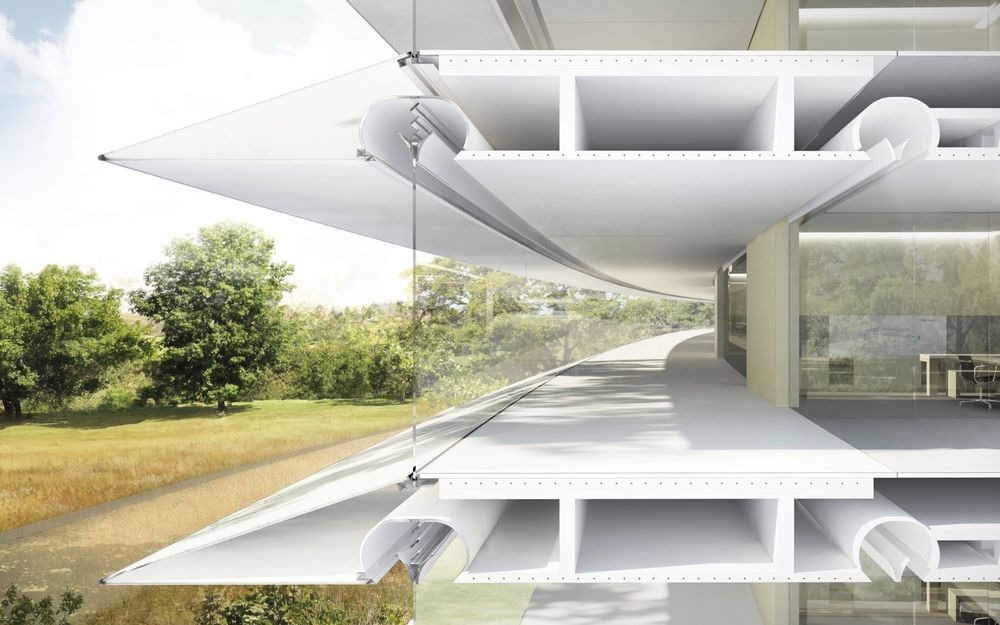A new tour of Apple's Campus 2 headquarters in Cupertino — due to start operations in early 2017 — offers a close-up glimpse of the building's progress, and some of its unique architectural details.
The company's hired construction crews are still installing the approximately 3,000 glass panes the building will use, many measuring between 36 and 46 feet wide and 10-and-a-half feet long, Popular Science reported. That's said to be over twice the length of the biggest standard glass pane, and Apple's heaviest weigh some 7,000 pounds.
Inside, the company is installing 4,300 unique concrete slabs, which will not only double as floor and ceiling but serve as part of the building's natural air conditioning system. Each is hollow to allow air circulation, and while Apple will have powered climate control, that option is intended mainly to serve as a fallback.
Much of Campus 2 is said to be built on an enormous scale. The structure's restaurant doors alone are 92 feet tall, and weight a collective 330 tons.
Pop Sci noted that the complex's rooftop solar panels should generate 16 megawatts of power, backed by an additional 4 megawatts from biogas fuel cells. This should cover three-quarters of the energy Apple needs during core work hours, the rest being supplied by Monterey County and First Solar through a 130-megawatt solar project.
Construction on Campus 2, valued at $5 billion or more, is expected to finish by the end of 2016. The company recently committed to moving all of its 2017 press events out of 1 Infinite Loop.
 Roger Fingas
Roger Fingas










 Christine McKee
Christine McKee
 Malcolm Owen
Malcolm Owen
 Marko Zivkovic
Marko Zivkovic

 Andrew Orr
Andrew Orr
 Andrew O'Hara
Andrew O'Hara
 William Gallagher
William Gallagher





-m.jpg)



35 Comments
"
width and length are
Still; pretty awesome stuff.
Also, forget where I read; but they built that glass installation machine just for the purpose of installing these panels.
The House that Jobs built is yet another testament to his passion and talent for creating beautiful and useful objects.
Early 2017? Just half a year away? From the last flyover video that I saw, I doubt that highly based on progress to date. I'd bet occupancy in a year might be a bit more accurate. (No need to argue, time will tell).
This facility seems so huge, I wonder how efficient it will be for employees: how long will it take from the time they drive onto the campus until they arrive at their desks? How long to get from one side of the building to the other, to meet with another employee or have a group meeting? How long to get to and from the cafeteria? How long to get out of the place at night when large numbers of people might be leaving at once? These are all things that can substantially eat into hours actually worked, but more importantly, eat into morale. On the other hand, if the campus works and if it's a beautiful place to work, that can raise morale and productivity. Will it increase interaction, as Steve suggested it would, or decrease it?
And while if the passive AC works, that would be fantastic and while this is relatively cool Northern California, I wonder how effective it's really going to be especially if all that glass causes an internal greenhouse effect. This building seems so complex that I bet there's going to be a long shake-out period. This isn't your standard steel, brick, glass, sheetrock, HVAC, electrical lines construction in a rectangle that every commercial construction company knows how to do.